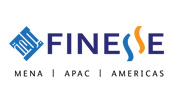The idea that company employees discuss and share their inner musings on corporate secrets when standing around the water cooler is probably more down to the movies than it is related to any form of reality. But if people are talking at work, one of the up-and-coming topics these days is their workflow—or lack of it.
Regardless of whether people talk at the water cooler, the tea station, or while queuing for lunch, we all discuss our working life experiences with each other in an informal way. It’s a sort of supplement―or you might say antidote—to human resources. And it’s where the crux of working lives is really played out.
So, in an increasingly connected and digitized world, may I suggest that the thread of water cooler conversations might be shifting slightly? Armed with new tools to transform the way many company processes are being carried out, people may now actually start discussing the state of their digital workflows and measuring their job satisfaction as a result.
A new yardstick for job satisfaction
People are now looking at the way work really gets done inside their organization in a far more granular and analytical way. Regardless of whether or not an individual is fully aware and cognizant of the digital workflow that their role may fall into, they are probably in one, nonetheless.
What everyone will know, instinctively, is that there is a flow of work between customers, partners and other members of an organization. What we can do with digital workflows is more accurately locate areas where work can be carried out more efficiently.
More than ever before we also know that people have more choice about the technology they use every day. We’ve witnessed the rise of Bring Your Own Device (BYOD) to work and the general consumerization of IT that came with it.
These experiences should tell us that if you don’t give people the right tools, then they will go and look for them. Equally, if you don’t give people the right applications, engagement systems and wider workflow patterns, then they will instinctively go and look for them, or make them.
Unrestrained innovation in a digitally native territory
The shift to digital business brings with it new opportunities. Non-techie businesspeople are starting to embrace so called low-code software application development platforms that allow them to build elements of app functionality that work just the way they want them to.
As these new freedoms play out in the workplace, firms need to think about the unknown factors. Unbridled and unrestrained innovation is all very well, but the problem with custom-built point solutions is that they often do one thing well, but fail to provide scope for enterprise-wide scalability or an ability to integrate across the entire organisation.
If we think about platform-level technologies, we can build that innovation factor into software that is digitally native to the cloud era and so ready for a more structured approach. Because these applications have been built in a digitally native territory, they will be able to leverage fully integrated native device capabilities, such as maps, camera, and so on.
The virtuous circle of workflows
If we hinge our business models around digital workflows that define what data lives where, then we can more easily react to change and uncover new streams of profitable operation. Digitizing workflows means we can use defined data where it has the right impact, but also channel unstructured data to the data lake.
But even the information in the data lake need not go to waste―we can apply Machine Learning (ML) to these data resources and use algorithms to find patterns in business transactions where we weren’t even looking for them to drive new business outcomes. This can be a virtuous circle because workflows can be tuned and changed based upon the new insights uncovered.
The business process you didn’t know about
The best work processes are very often the ones that you follow, but that you didn’t even know about. If we define digital workflows and build our operational models around them, then we can increase productivity and create great experiences for employees who want to work anywhere and at any time.
A lot of employees have to take actions throughout the day that move the organization forward, but often these same actions prevent them from doing high-value work. It’s time to transform old, manual ways of working into modern digital workflows, so employees and customers get what they need, when they need it.
Create a joined-up experience
Kicking off digital workflow initiatives and getting your transformation started can be a real challenge and as a result, many companies struggle to even start their efforts. First of all, we all have disjointed internal systems and processes that make it hard to connect the dots. Trying to navigate these can feel like unravelling a ball of yarn, so the more you learn, the more complicated they seem.
Once you make sense of the systems and processes, you have to figure out the myriad tools and solutions that drive these. The end result you should be aiming for is a common, workflow-driven experience layer that is consistent across the systems in your organization.
Your typical company employee might still be more likely to discuss holiday plans, managerial peeves and whether or not the associate in accounts is being a pain about expense reports, but the water cooler conversation around ‘how is your workflow?’, is coming. Are you digitally hydrated yet?
































































